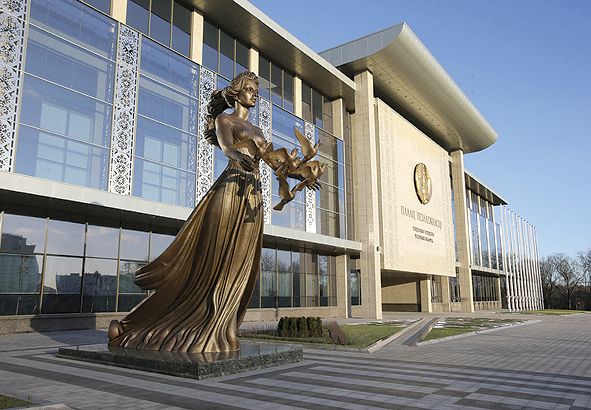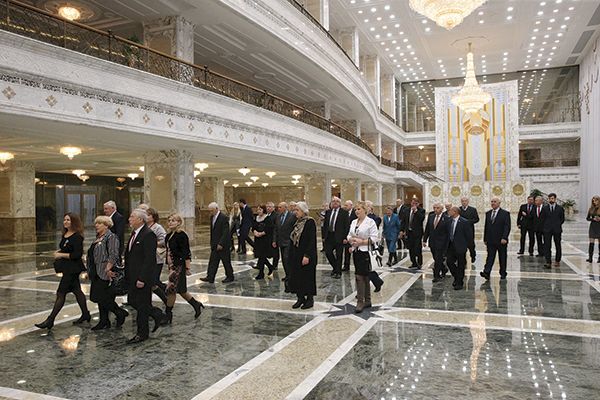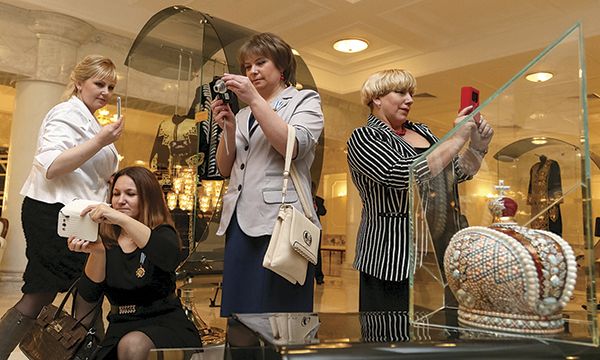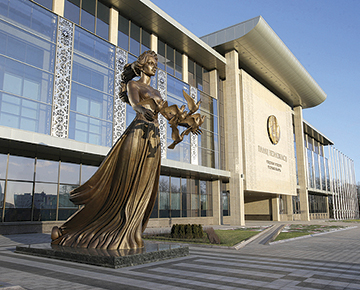
The building is unforgettable, as the media often report. However, you can verify the truth of this with your own eyes. It’s possible to take a tour, soaking up the atmosphere of being at the hub of global events.
Not long ago, the Palace of Independence hosted a tour for Belarus’ honoured personalities: members of the Minsk Regional Executive Committee’s Council of Aldermen, honorary citizens of the Minsk Region, and prominent representatives of companies, organisations and society.

During a tour of the Palace of Independence
A veteran of labour and Hero of Belarus, Pavel Mariev, comments, “The Palace is uplifting in its solemnity. The fact that it has hosted world scale events (such as the Normandy Four, which met here to find a path to settle peace in Ukraine) indicates its special significance. This is a worthy symbol of a worthy country.”
The February meeting of heads of Russia, Germany, France and Ukraine has been often recollected, being an historical landmark for the Palace. Its Green Hall is now well known, having hosted 15-hour talks.

The Chairman of Agrokombinat Snov Agricultural Production Co-operative, and a member of the Council of the Republic, Nikolay Radoman, admired the paintings which hang on the walls: all presented to Alexander Lukashenko by heads of foreign states. Mr. Radoman mused, “This is not merely an historical place, and a place of state, but a living embodiment of the achievements of our designers, builders and furniture makers. This building vividly demonstrates the success of modern Belarus.”
The dining table and chairs were made by Pinskdrev masters, while the sofas were produced in Molodechno and other tables come from Bobruisk. Huge sparkling chandeliers were supplied by Lida’s Cascade. All indicate the Palace’s national character and significance. Olga Dargel, who headed the Social Protection Ministry from 1994 to 2001, notes, “Everything here is so impressive that it’s hardly possible to describe it. Something of the kind should have appeared in Belarus long ago. This isn’t simply a building but a bright national symbol of our state.”
By Maxim Osipov
Photo: BelTA, Alexander RUZHECHKA
Photo: BelTA, Alexander RUZHECHKA











